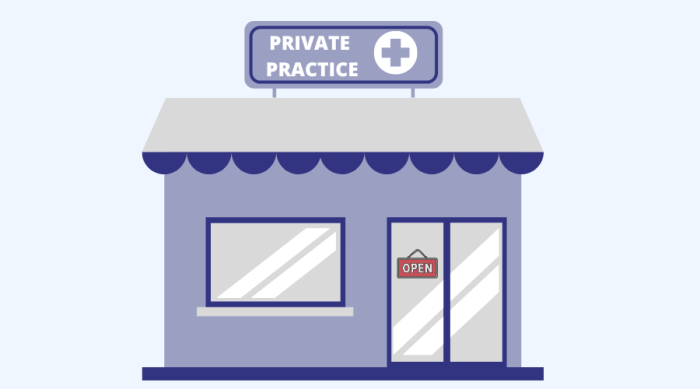Opening a Private Practice
Opening a Private Practice

In 2009 I decided to step out of my comfort zone and open a solo private practice. I’ve enjoyed the last 15 years in private practice, and looking back, there are some choices I made that were on point, some that were errors in judgements, but all were learning experiences.
For those interested in starting their own practices – which I highly recommend – here are some of the tips I have:
The BIG Questions
- Start by deciding what kind of services you want to offer – do you want to be a generalist, or a specialist? Are there specific age ranges you prefer? Consider not only your training but also the demand; the need for child and adolescent therapists is far greater than the number of available providers. If you want to specialize in working with youth but didn’t get any training in working with that client population, there are great workshops and training opportunities available through ADAA, as well as monthly case consultations through the SIGs. I highly recommend ongoing supervision with an experienced clinician.
- How do you want to offer services – in-person, telehealth, in-home, or a combination? One option is to sub-lease office space from another therapist. There’s always the option to lease your own office in the future. Fourteen years ago, when the landlord handed me the keys to my own office, my first thought as I walked out of the building was “Oh shit … what have I done?” Today my practice is always full, and if you decide to specialize in working with younger clients the good news is that, once you are established and known in your community, you will always have plenty of referrals.
- What kind of hours are you willing to work? If you are going to work with youth, many practitioners choose to work after school and into the evening. Today I offer services to a mix of teens and adults and reserve spots for adolescents and teachers after 3:30pm. I generally start around 8:30am and finish between 5:30pm or 6pm, Monday through Friday. I refuse to work weekends; experience showed that the highest no-show rates occurred on Saturdays. A colleague of mine, who is Jewish, works on Sundays and has a practice geared toward observant Jews. She is almost always as full as she wants to be.
- Consider not just your needs as a therapist, but also the needs of your family. It is important to set healthy boundaries around your workday so that you can balance work with family time.
- Make time to meet other local therapists for coffee or lunch. Create both virtual and paper business cards. Attend local CEU trainings, and network, network, network.
The Nitty Gritty Details
- Consider if you want to hire a lawyer, bookkeeper, and/or accountant to help you get your business set up. If so, choose people who have experience working with health care professionals, as they’ll know the ins-and-outs. This can save you time and, in the long run, money.
- Do you want to offer cash pay or become in-network with insurance providers? In my own journey to opening my private practice, I recognized a need for well-trained, evidence-based providers willing to take insurance. Some days, as I deal with the frustration of dealing with insurance companies, I bitterly regret that decision. But when a client arrives who really could not afford to be seen out-of-network, I am reminded that it is worth it in the long run.
- If you are brave enough to become an in-network provider, most insurers want you to have at least a couple of years’ experience before allowing you to join their network.
- If you are interested in self-pay, research what others in your area charge. In the beginning, charge a little less and then gradually raise your rates commensurate with others in your area. Be careful not to undercharge. You are worth it, and if you undercharge, those of us who do take insurance suffer as the insurance companies tend to base reimbursement rates on those low fees.
- I have chosen to stay as a sole proprietor: one of the ways I reduce risk is by doing a short phone assessment with new clients (or their parents) to assess whether or not they are a good fit for my practice. The temptation, especially in the beginning, will be to take anyone who calls you. Resist that temptation! I screen out any clients who do not have anxiety disorders or OCD. This is a lesson hard learned from experience!
- Get a website. Use a web design service company or design your own.
- Advertise online and look at the profiles of other therapists. Get feedback from others and tweak yours if you are not getting any responses.
Do Some Research On
- Naming your business – make it something people will remember. I was not very creative, so my business is simply Stephnie Thomas, LCPC.
- Getting a National Provider Identification Number (NPI). Information on how to register for an NPI can be found at https://nppes.cms.hhs.gov.
- What business structure you want – sole proprietorship, S-CORP, LLC, etc.? If you become an S-CORP or an LLC you will need a separate NPI for the business, in addition to your personal NPI.
- Getting good liability insurance.
- Opening up a separate checking/savings/credit card account specifically for your business. DO NOT mix personal banking with business banking, no matter how tempting it may be. I set aside money for quarterly taxes into a separate savings account whenever I pay myself from my business account.
- Get a HIPAA compliant email service. Mine encrypts emails end to end and does not require the client to take extra steps to read email communications.
- Use an Electronic Health Record (EHR) to keep notes. Many offer a 4-week trial period so you can try before you buy.
Bottom line: I have no regrets going out on my own. I love the freedom this affords to set my own schedule and work with the kind of clients I most enjoy. Anticipatory anxiety is real, especially when starting something new. My advice? If you have ever thought about going into private practice, do it!
If you have any questions, feel free to email me at [email protected], or call and leave a message at 410-236-1470.
This post is presented in collaboration with Child and Adolescent SIG. Learn more about the SIG.














